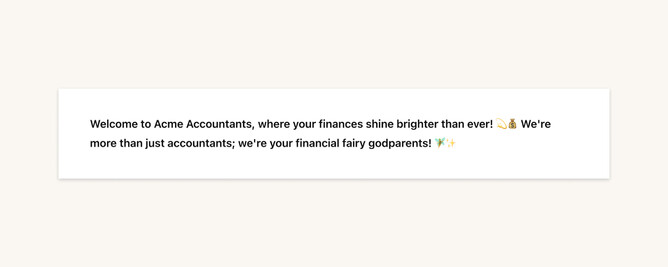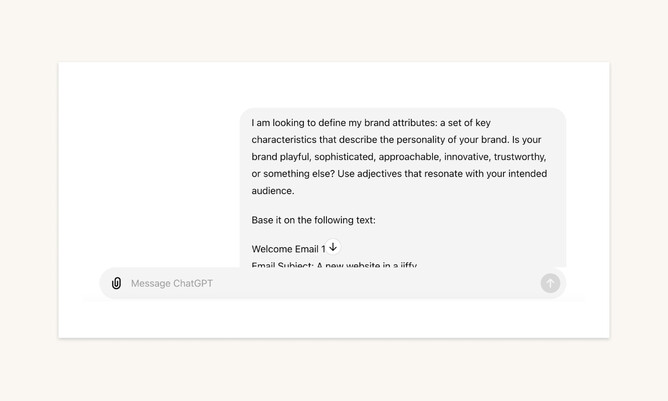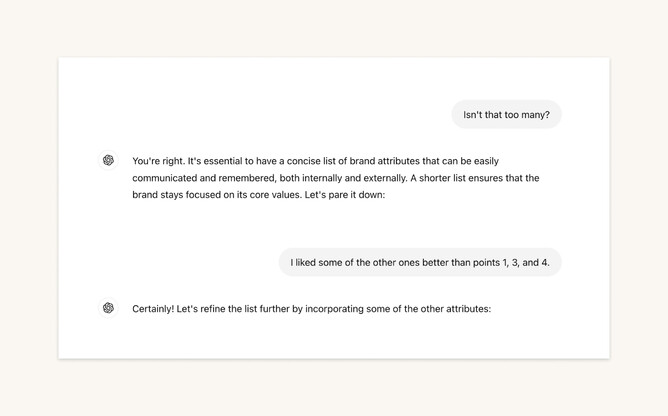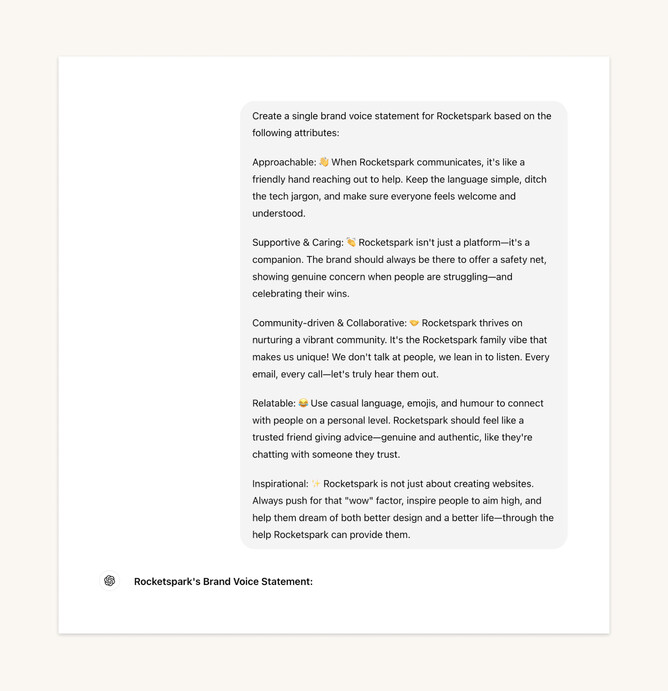Creating marketing content that truly clicks with your audience and captures your business’s unique vibe can be tricky. Many businesses, especially those on a tight budget, have to roll up their sleeves and DIY their content. But when you get your brand's tone of voice just right, your business stands out and forms genuine connections with people.
AI enters the chat… 😂
In the hands of most business owners, A.I. can go a bit A.W.O.L. Sure, it’s fast, but often it’s fast in the wrong direction. So, how can you rein in AI and ride it off into the sunset with amazing brand copy? Or for the Dune fans out there, like Paul Atreides on a giant sandworm.
In this post, we're giving you a peek behind the curtain at how we developed our tone of voice guidelines and use it to write on-brand content.
Step 1: Getting started with the basics
First off, we already knew who our audience is and what their key challenges are. Understanding this is a big part of what we do as a business. This post focuses on how we use language to reflect our brand values and connect with our audience.
I asked ChatGPT what a brand tone of voice guide should include. It highlighted two key things:
A brand tone of voice statement
Brand attributes
These are important to help shape how your brand communicates, especially when using AI tools like Flint or ChatGPT.
Step 2: Defining our brand's strengths
Next, we needed to define our brand attributes. To do this, I used content that already felt like “us.” We had previously worked with an amazing writer, Megan Raynor, who helped us with some homepage text and an email onboarding sequence.
I uploaded the writing that felt most like us to ChatGPT and asked it to identify the brand attributes.
The first iteration returned 10 attributes but I wanted to narrow it down to a shorter list, but it needed some guidance.
With a few more tweaks, we narrowed it down to these:
Approachable: 👋 Rocketspark feels like a smile and a wave from someone wanting to help. We keep the language simple and make sure everyone feels welcome.
Supportive & caring: 👏 Rocketspark isn’t just a platform—it’s a friend. We offer support, show concern when people struggle, and celebrate their wins.
Community-driven & collaborative: 🤝 Rocketspark thrives on community. We embody the Rocketspark family vibe, listening and engaging with everyone genuinely.
Relatable: 😂 We use casual language, emojis, and humour to connect with people. Rocketspark feels like a trusted friend giving advice.
Inspirational: ✨ Rocketspark is not just about creating websites. We inspire people to aim high and dream big, helping them achieve better designs and a better life.
Step 3: Crafting our tone of voice statement
Now that I’d narrowed down the brand attributes, I used those attributes to create our tone of voice statement. A tone of voice statement is a single sentence that sums up how we talk as a business. It’s a quick reference and helps guide AI writing tools.
To get to this point, I did the following prompt using an earlier version of the brand attributes:
The first response was too long (around 6 lines). Across the next 25 odd refinements asking it to make it less of sales pitch, make it shorter, swap out certain words and sometimes simply “try again” or “give me 5 variations”. Ultimately it just required experimentation until I came up with something that felt like us.
Eventually this is what we settled on:
This means we talk like a friend at a BBQ who can explain tech stuff in a way that gets everyone smiling. We make the digital world feel friendly and fun. But we know when to show extra concern when things get tough. This helps us avoid sounding too businessy or technical. We aim to be down-to-earth and relatable.
AI writing has a tendency to sound a bit pompous, overly confident or salesy. The empathy piece is a dose of reading the room to make sure that we’re not using the wrong tone in the wrong context.
Step 4: Tone it up or tone it down
Now, when we use Flint or ChatGPT to write content for Rocketspark, we tell it to follow these guidelines. By adding these details to ChatGPT's custom instructions or using Flint's custom tone of voice feature, we greatly improve the quality of AI-generated text.
Sometimes, though, the content can come across as a bit too enthusiastic or overdone for the situation. That’s when the prompt “tone it down a little” comes in handy. For instance, in the example below, the initial response felt a bit over the top. After asking to “tone it down a little,” the response was much more on point.
Using AI to clean up and refine your writing speeds up the content creation process. You can focus on getting your ideas down without worrying about the tone, and then tweak and improve it during editing.
10x better quality AI content
These detailed tone of voice instructions make a big difference. Without them, AI was producing text that sounded too formal, technical or overdone. But with them, our content feels more like us—friendly, supportive, and community-driven.
The quality of AI-generated text improved by about ten times with this detailed tone of voice instruction. We found that our communications became more engaging and relatable, helping to strengthen our connection with our audience.
Conclusion: Your turn to shine
Creating a tone of voice for Rocketspark was a mix of human creativity and AI support. Now it’s your turn—take the text samples that capture your brand, refine them with AI, and watch your brand voice come to life. Let your unique tone connect with your audience!






